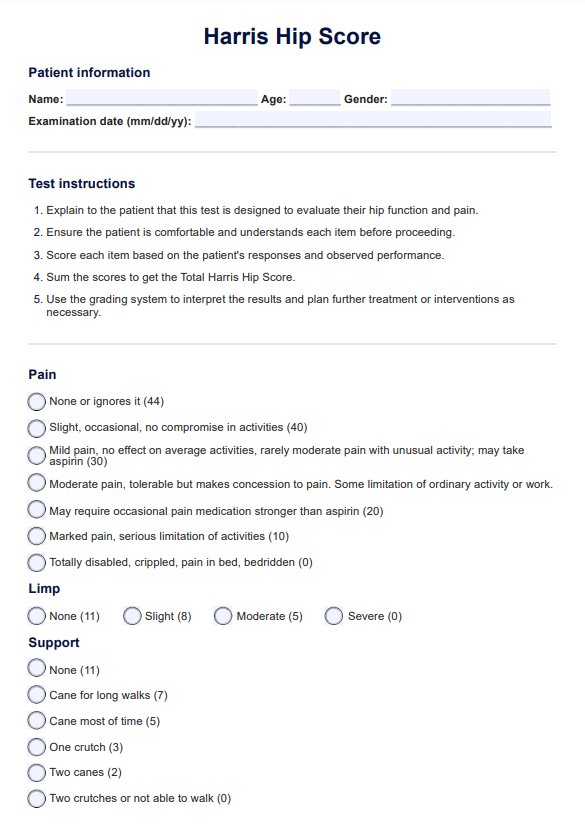The Harris Hip Score evaluates hip function and pain in patients, particularly those undergoing total hip replacement surgery or suffering from various hip disabilities.

Harris Hip Score
Assess hip function and pain with the Harris Hip Score template. Ideal for patients post-hip surgery or with hip disorders. Accurate, easy, and comprehensive.
Use Template
Harris Hip Score Template
Commonly asked questions
The score is calculated by summing the points from various domains, including pain, function, absence of deformity, and range of motion, with a maximum possible score of 100.
Patients experiencing hip pain, functional limitations, disabilities, or total hip arthroplasty are ideal candidates for this assessment.
EHR and practice management software
Get started for free
*No credit card required
Free
$0/usd
Unlimited clients
Telehealth
1GB of storage
Client portal text
Automated billing and online payments











